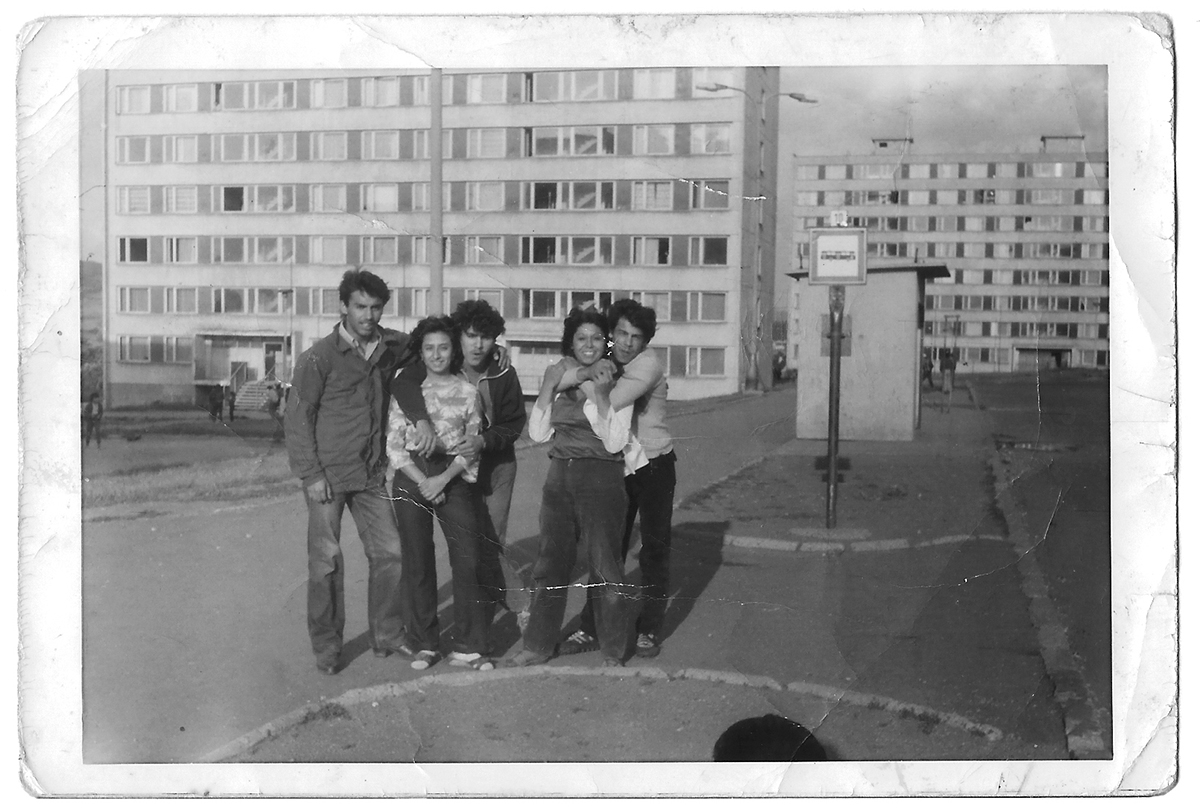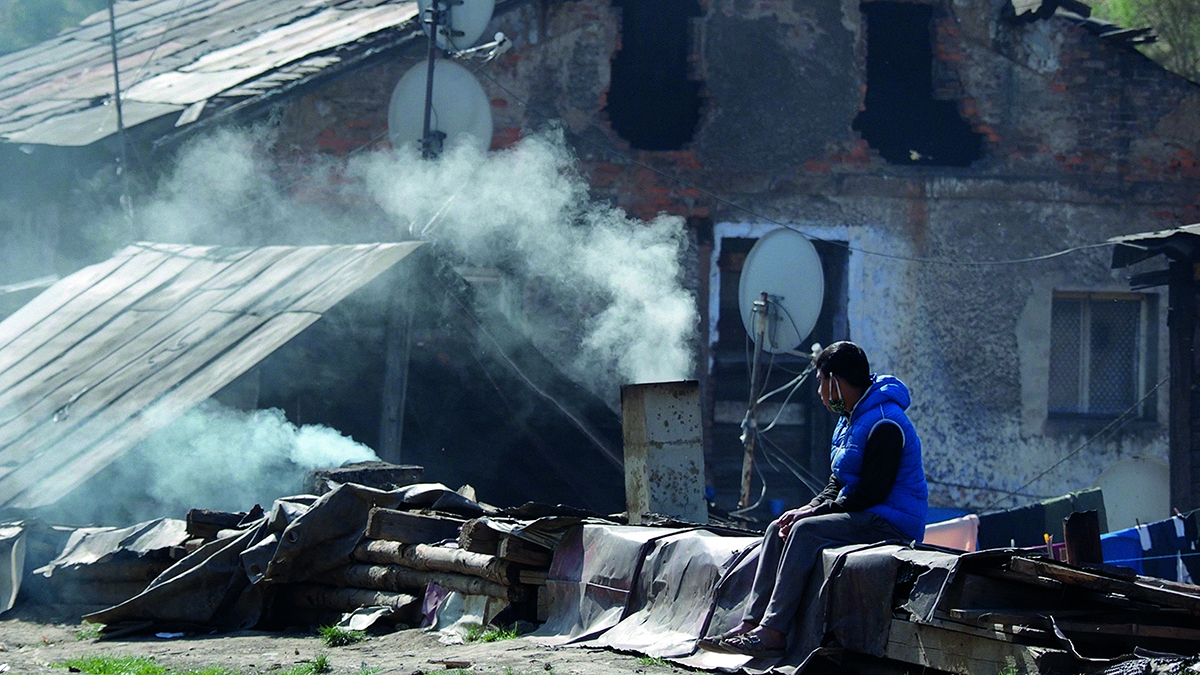The exhibition Manuš Means Human at Kunsthalle Wien questions the boundaries between art and ethnography, and the conditions under which each is made and distributed

Rozana Kuburovič, The First World Romani Congress, 1971. Courtesy the artist
In Europe at least, few groups are as marginalised as the Romani people. They are still the butt of jokes and stereotypes that exoticise or revile them, and the victims of widespread discrimination and material poverty. This is the world of Averklub Collective, a loosely organised group whose 13 main members were once residents of the Chanov housing estate in Most, Czech Republic, the country’s largest Romani settlement. Together, they question the boundaries between art and ethnography, the conditions under which each is made and distributed, and who gets to tell the story of the Romani people.
Manuš Means Human, named after a book published by Czechoslovak-Romani politician Vincent Danihel in 1986, moves the collective’s practices into the museum in order to bring key moments from Romani history to light. The show also tells an unsettling story: that the Romani people enjoyed much better social status and material conditions under Czechoslovakia’s socialist regime than under the liberal capitalism that replaced it. The group does this by displaying a vast collection of works and objects – some produced by the collective itself, others by Romani artists, many originating in the Museum of Romani Culture in Brno – in six colour-coded ‘sections’ dealing with different aspects of Romani life, culture and suffering, including labour conditions, housing issues, the 1971 Romani Congress, the Stalin-era standardisation of the Romani language and, perhaps most importantly, the conditions for the representation of Roma people.

Take, for example, the section amusingly titled ‘The History of Art, without History and without Art’. This line of sculptures, set on green platforms in the middle of the room, proceeds from three busts – Vincenc Makovský’s Student (1945–49), Miloš Axman’s Portrait of the Sculptor’s Wife (1951–52) and Averklub Collective’s own pointedly squashed A Portrait of George Soros (2021) – through Daniel Kováč’s sculptures of a female saint, a lion, a king, a woman and a head, which look like early medieval relics but were all produced in 2005 (though King is undated), to a grey concrete brick, a yellowish unfired handmade brick (1990s) and a grey and white handmade mould for forming unfired bricks (1990s), all of which are uncredited because they are real bricks used for construction, first shown in the Museum of Romani Culture.

This whole section resists the kind of ‘linear’ interpretation offered by traditional Marxist philosophies of history. There is no story of progress here. Nor can the display be read as a passage from socialist realism (the busts) to greater, freer forms of abstraction (the bricks). Not only are the latter not art objects, they do not become so once they’re brought into the museum space: they don’t represent the terminus for an emancipatory history, and cannot be used to build a paradise – socialist or otherwise – only the most basic forms of shelter. What we are left with is a frustrating story about the impossibility of making art or envisaging the future under conditions of total material and spiritual destitution. The contrast with Saban Hasy’s Onward (1969) from the section ‘He Who Does Not Work Shall Not Eat!’, about labour, could not be greater. This oil painting looks like classic socialist realism. A man and a woman, surrounded by farms and machinery in a mountain setting, are building the socialist future. The man holds out his hand, surveying the territory in front of him, mouth open – perhaps issuing a command to his fellow workers, promising progress – while a woman to his right holds a blueprint. Together, they lay out the future for all mankind, with Romani people included.


These hopes are confirmed in Rozana Kuburovič’s painting The First World Romani Congress (1971). Based on a photograph from the Museum of Romani Culture, it shows delegates dressed in period clothes (Afghan coats, loud shirts, big collars), apparently singing while waving the newly adopted flag of the Romani people – included nearby in both its official and Yugoslav variants – and holding a document demanding a camp be set up in response to the death of three Romani children on the streets of Walsall, England. Two videos made by the collective, however, show the grim reality of life after dreams of emancipation. The seven-minute Social Murder (2021) shows the Zabíjanec Romani settlement in Rudňany, Slovakia. We see grinding poverty – men sitting smoking in the doorways of dingy shacks, naked children playing in the trash, women hanging up washing – while a voice reads passages, in Czech, from Friedrich Engels’s The Condition of the Working Class in England (1845) that chime with what we see, despite the long historical gap between words and images.
A companion video, the hourlong My Home in the Chanov Housing Estate (2021), documents the shift from socialism to capitalism in one specific location. One interviewee describes a once-thriving community who lived in “beautiful apartments”. When socialism collapsed, however, people were left to fend for themselves in a brutal new reality; abandoned by social services, the mafia moved in. “It was wonderful here,” she says. “And then the kids destroyed it.”
Averklub Collective: Manuš Means Human at Kunsthalle Wien, Vienna, 2 June – 5 September
From the September 2021 issue of ArtReview